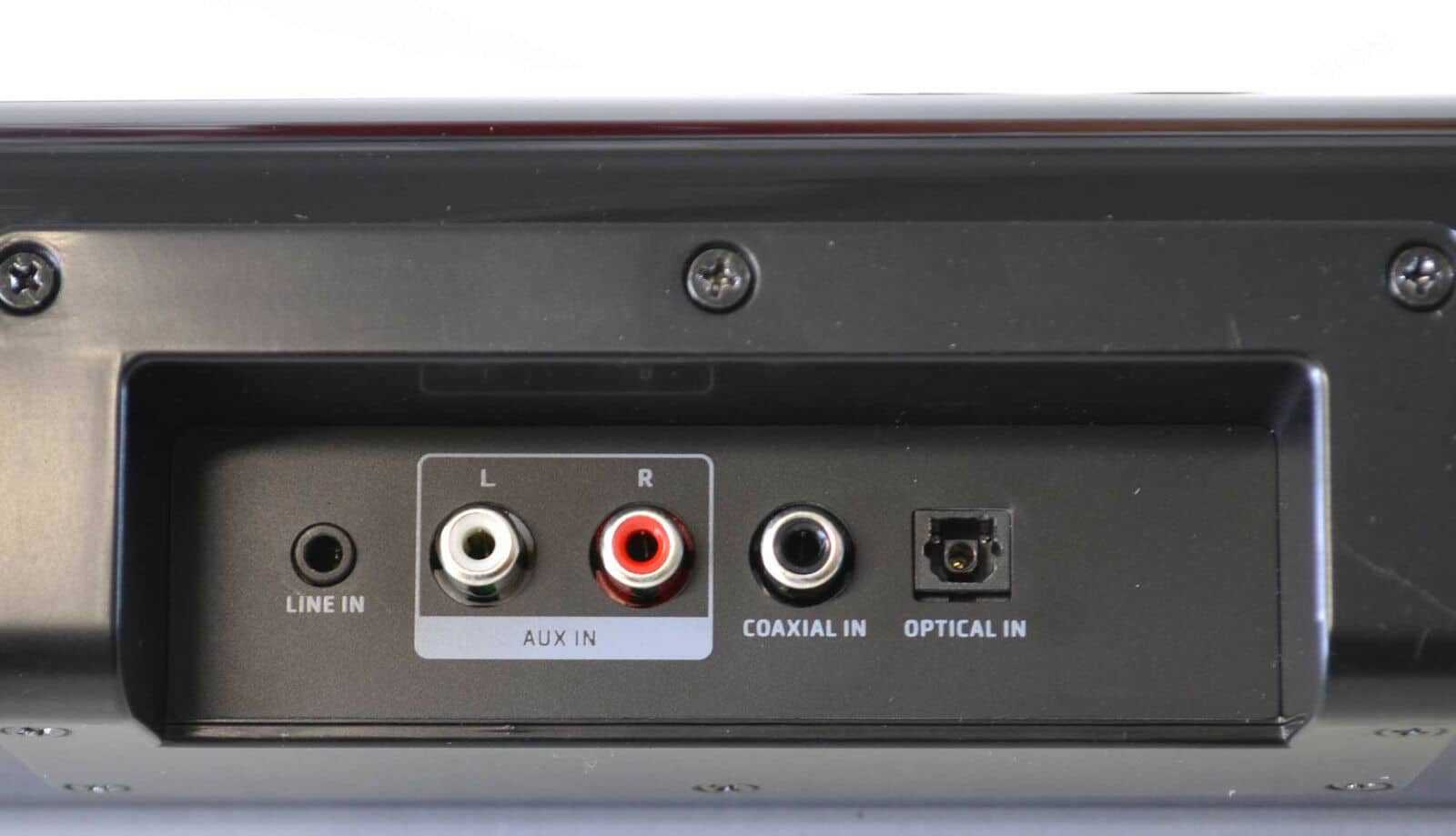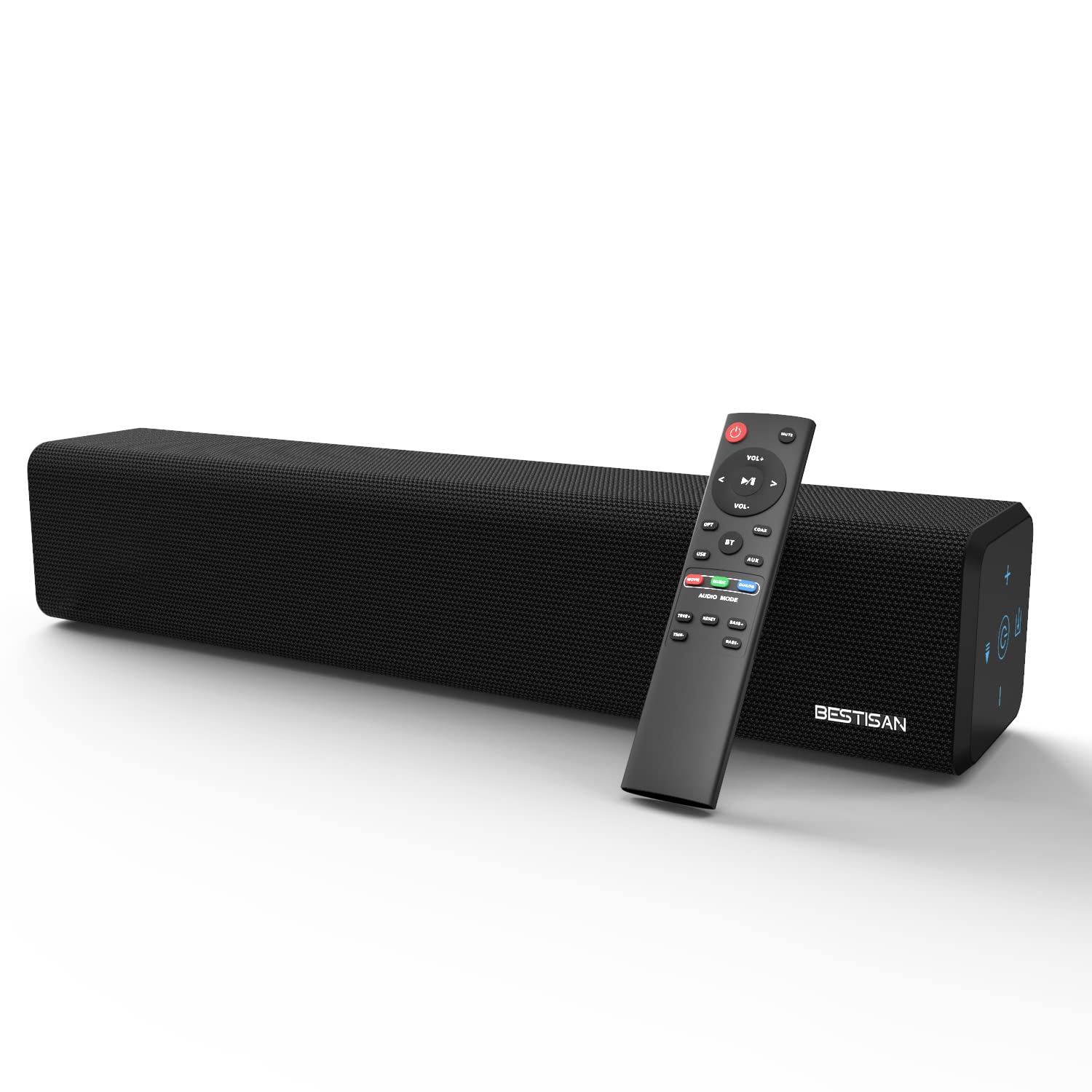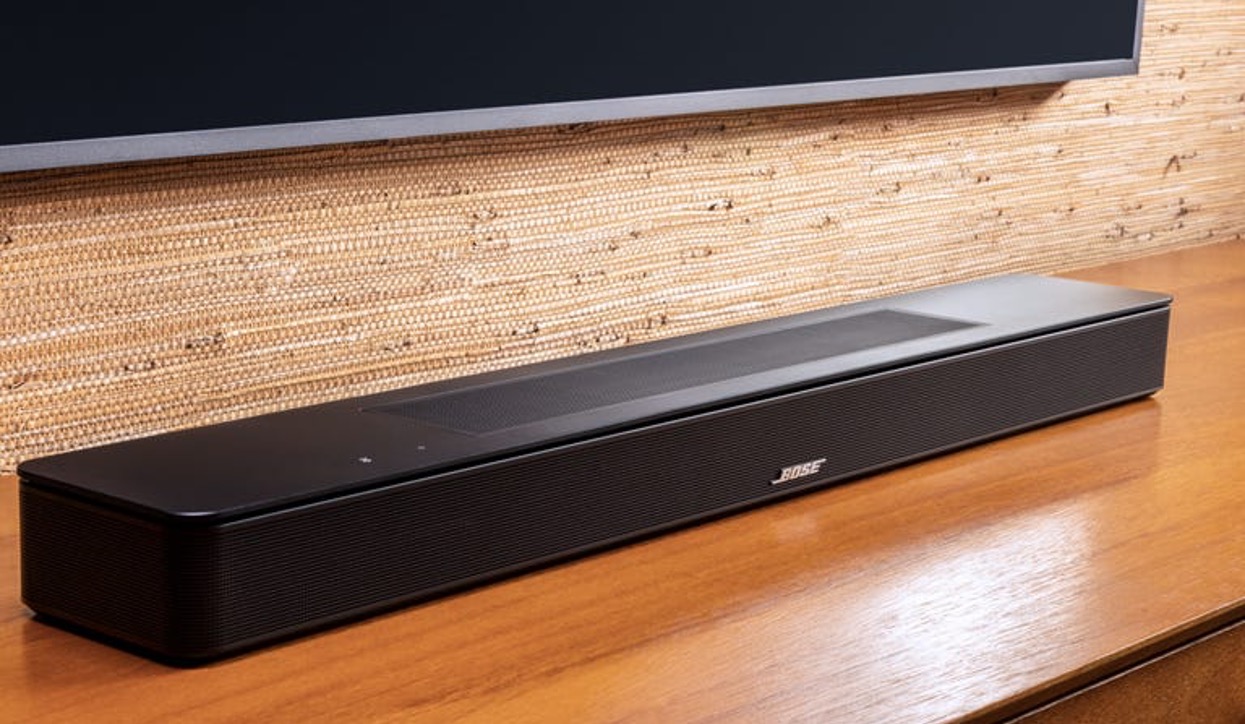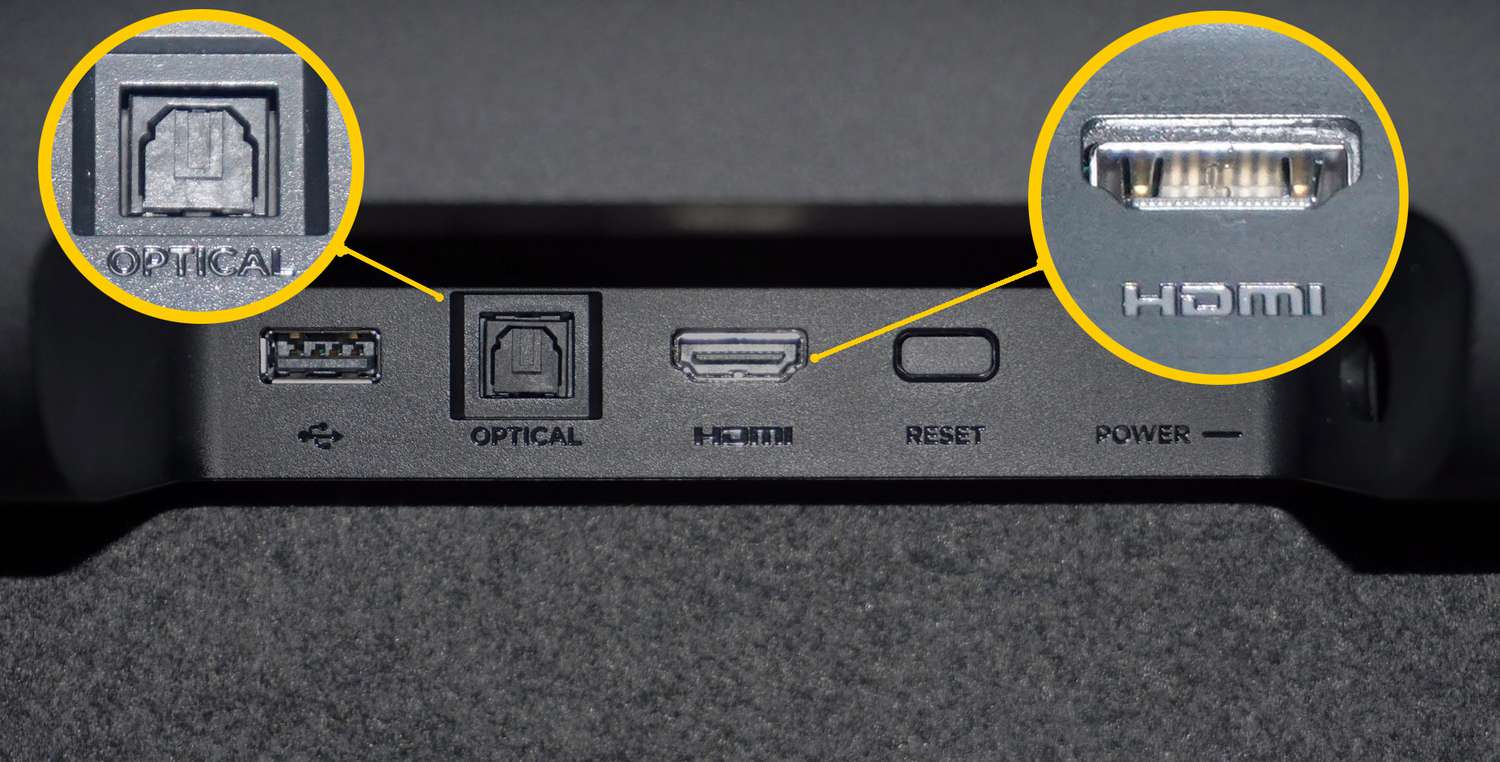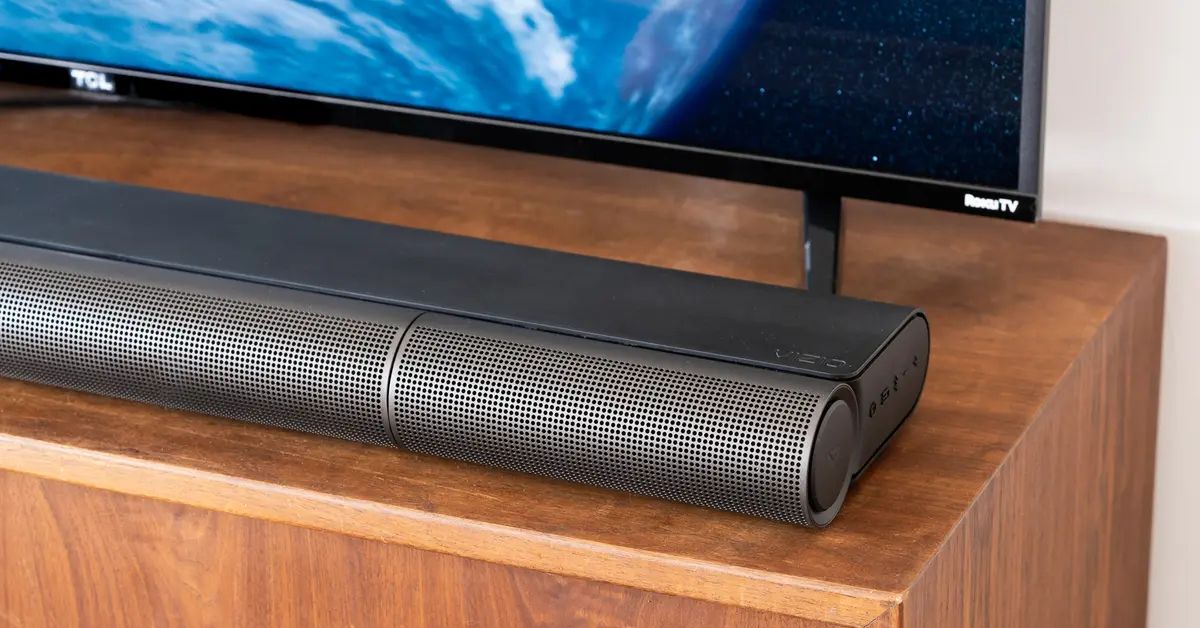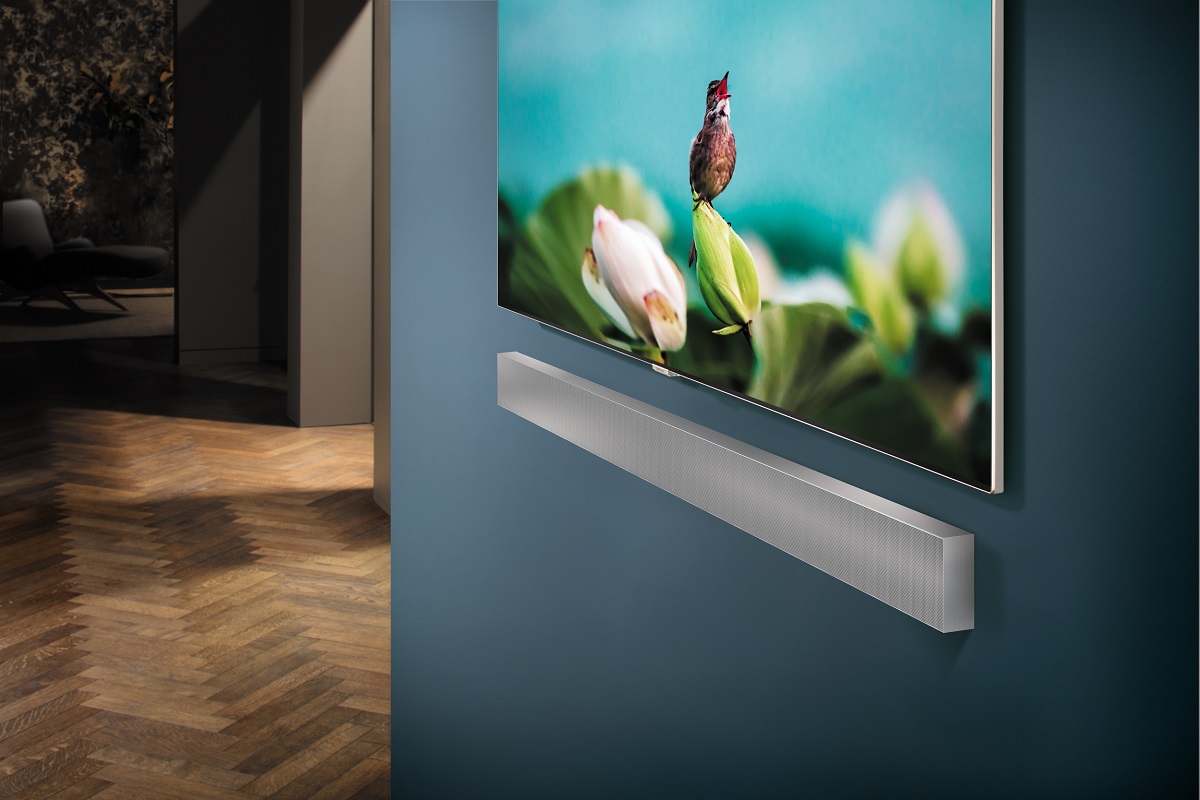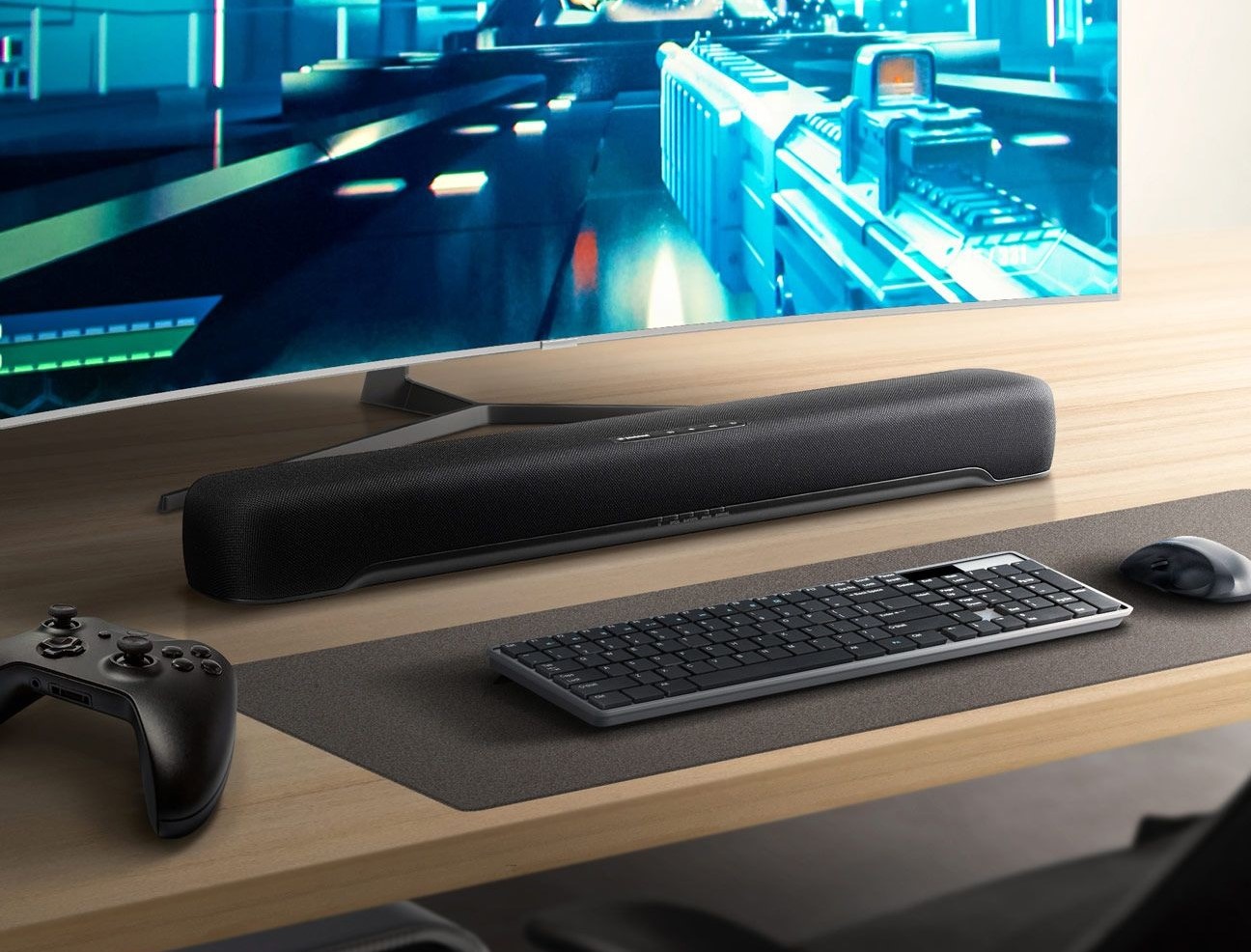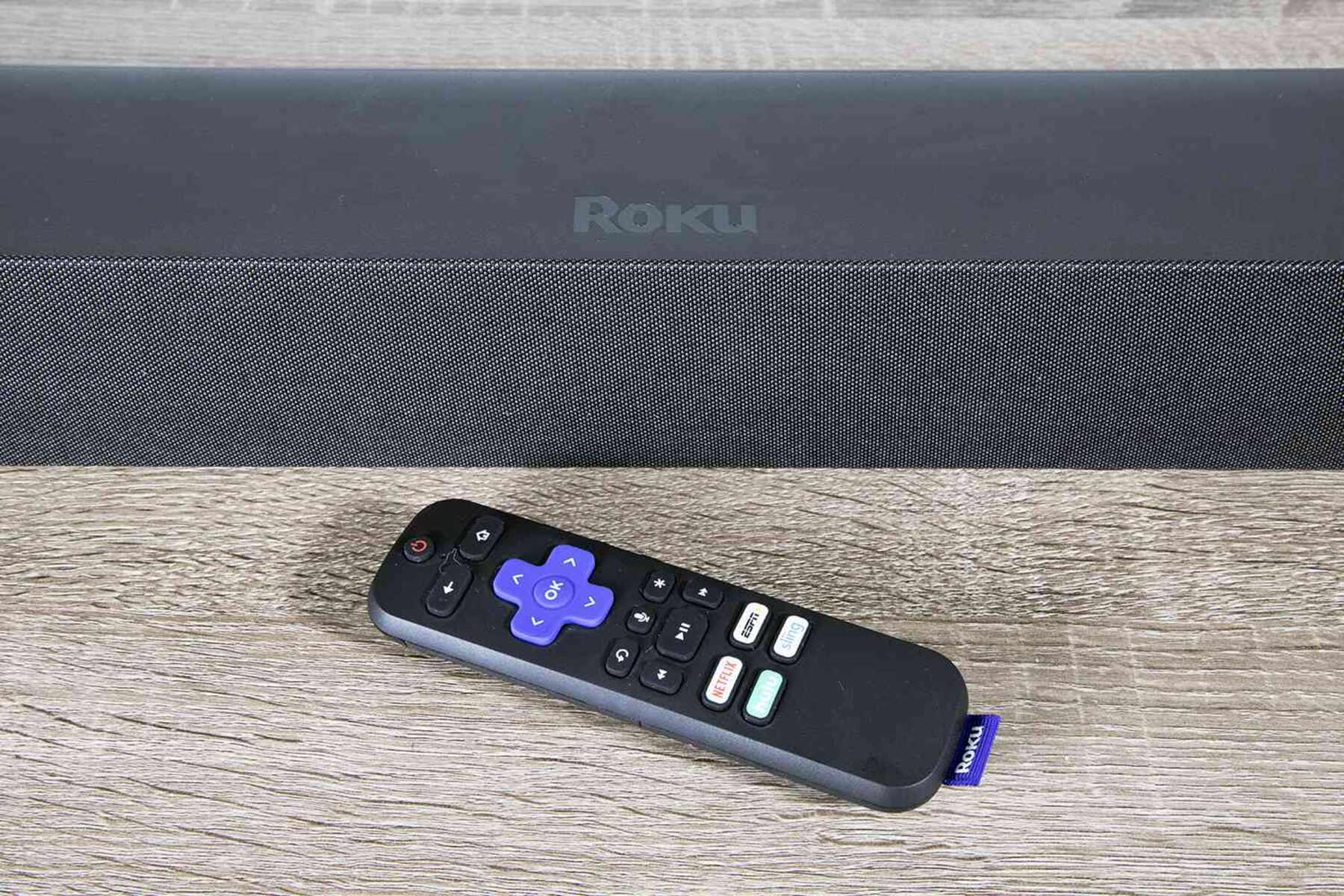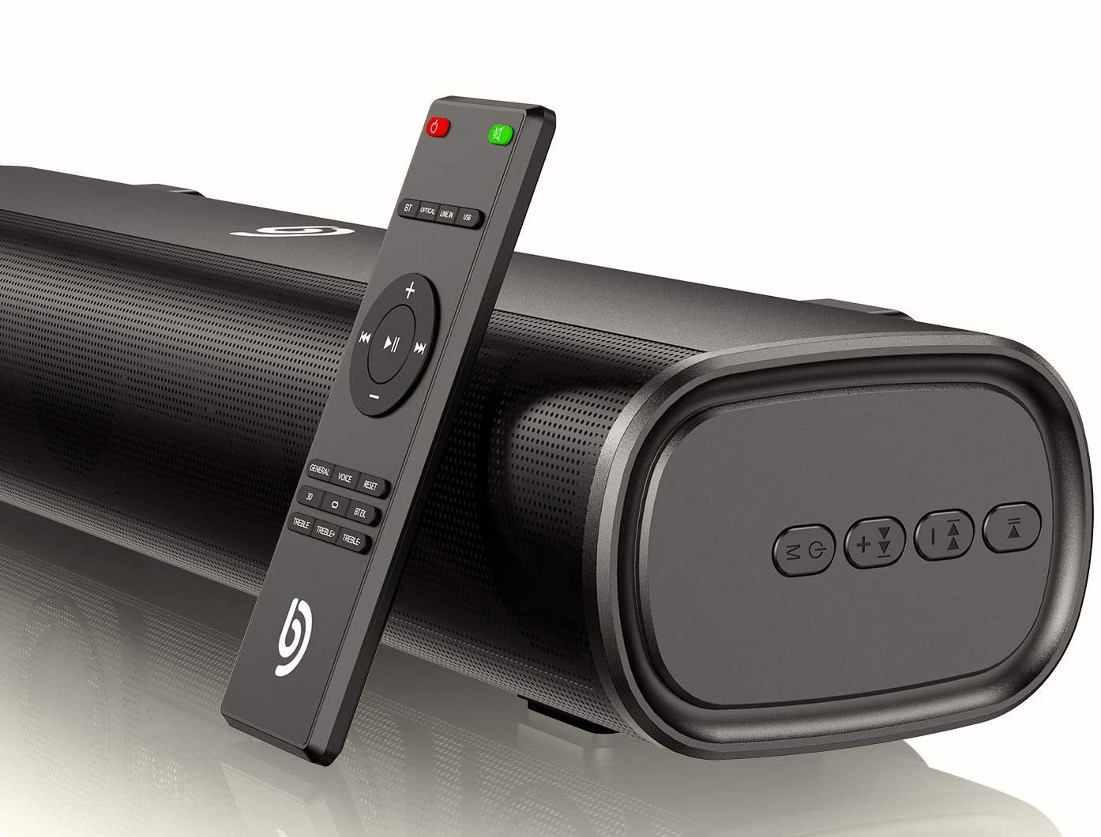Introduction
Welcome to the world of immersive audio, where a soundbar can elevate your home entertainment experience. When it comes to connecting your soundbar to your TV or audio system, you may have come across the term “optical cable.” But what exactly is an optical cable and why is it important for your soundbar setup?
Simply put, an optical cable, also known as a Toslink or SPDIF cable, is a type of audio cable that uses pulses of light to transmit digital audio signals. It provides a high-quality, noise-free connection between your audio source and soundbar, ensuring crystal-clear sound reproduction.
Optical cables have become increasingly popular in home audio setups due to their ability to deliver superior sound quality and compatibility with a wide range of devices. In this article, we will delve into the world of optical cables for soundbars, exploring their functionality, benefits, and how to set them up for optimal audio performance.
Whether you’re a casual movie enthusiast or a music lover seeking an immersive audio experience, understanding the importance of an optical cable for your soundbar is essential. So, let’s dive in and demystify the technology behind optical cables and their role in transforming your home entertainment setup.
What is an Optical Cable?
An optical cable, also known as a Toslink or SPDIF cable, is a type of audio cable that transmits digital audio signals using pulses of light. Unlike traditional analog cables that transmit electrical signals, optical cables utilize fiber optic technology to ensure high-fidelity audio transmission without any interference or signal degradation.
The core of an optical cable consists of thin strands of glass or plastic fibers that are capable of transmitting light signals. These fibers are encased in a protective jacket to prevent damage and ensure durability. At each end of the cable, there are connectors that allow for easy connection to audio devices such as soundbars, audio receivers, and televisions.
Optical cables are designed to carry multi-channel audio signals, including formats like Dolby Digital and DTS, making them ideal for home theater setups. They have become the go-to choice for connecting soundbars to TVs and audio systems due to their ability to deliver superior sound quality and eliminate interference from electrical sources.
One of the key advantages of optical cables is their immunity to electromagnetic interference (EMI) and radio frequency interference (RFI). This means that even in a crowded electronic environment, your audio signal will remain pristine and unaffected by other devices. Optical cables also have a longer transmission distance compared to analog cables, allowing for greater flexibility in your audio setup.
Additionally, optical cables support audio sampling rates up to 192kHz, providing high-resolution audio playback for the most discerning audiophiles. Whether you’re enjoying your favorite movies, TV shows, or music, an optical cable ensures that every audio detail is faithfully reproduced.
In summary, an optical cable is an advanced audio cable that utilizes fiber optic technology to transmit digital audio signals. Its ability to deliver high-fidelity sound, immunity to interference, and support for multi-channel audio formats make it an essential component in any soundbar setup.
How Does an Optical Cable Work?
Understanding how an optical cable works can help demystify its role in transmitting digital audio signals. At the heart of an optical cable is a light source, usually a laser diode or light-emitting diode (LED), that sends pulses of light down the fiber optic strands.
When you plug one end of the optical cable into your soundbar and the other end into your audio source, the light signals are transmitted from the audio source to the soundbar. These light signals contain the digital audio information, encoded as a series of binary pulses.
Inside the optical cable, there are two types of fibers: the core and the cladding. The core is the innermost layer, responsible for carrying the light signals, while the cladding surrounds the core and helps contain and reflect the light within the core.
As the light pulses travel down the core of the optical cable, they undergo a process called total internal reflection. This phenomenon occurs when the angle at which the light hits the boundary between the core and the cladding is greater than a critical angle, causing the light to be reflected back into the core instead of escaping through the cladding.
This continuous bouncing of light within the core allows the digital audio signals to travel long distances without significant loss or degradation. It ensures that the audio signals reach the soundbar in their original form, resulting in high-fidelity sound reproduction.
Upon reaching the soundbar, the light signals are converted back into electrical signals using a light-sensitive diode known as a photodetector. The photodetector detects the changes in light intensity, converting them into electrical voltage variations that represent the original audio information.
From there, the electrical signals are processed by the soundbar’s internal circuitry, decoded, and translated into audible sound that is then amplified and emitted through the soundbar’s speakers.
In summary, an optical cable works by transmitting digital audio signals as pulses of light through fiber optic strands. The light signals are reflected within the core of the cable, ensuring minimal signal loss and resulting in high-quality audio reproduction through the soundbar.
Benefits of Using an Optical Cable for a Soundbar
Optical cables offer a range of benefits when it comes to connecting your soundbar to your audio system or TV:
- High-Quality Audio: One of the key advantages of using an optical cable is the ability to transmit high-fidelity audio. The digital transmission eliminates potential noise and interference, resulting in pristine sound reproduction. Whether you’re watching movies, gaming, or enjoying music, an optical cable ensures a superior audio experience.
- No Interference: Unlike analog cables, optical cables are immune to electromagnetic interference (EMI) and radio frequency interference (RFI). This means that you won’t have to worry about any buzzing, humming, or static noise caused by nearby electronic devices.
- Easy Setup and Compatibility: Optical cables are widely compatible with various audio devices, making them easy to set up. Most modern soundbars, TVs, and audio receivers have optical input/output ports, allowing for hassle-free connection. Simply plug in the optical cable, and you’re ready to experience immersive audio.
- Longer Transmission Distance: Optical cables are capable of transmitting audio signals over longer distances compared to analog cables. This flexibility allows you to position your soundbar in the ideal location without compromising on audio quality.
- Supports Multi-Channel Audio: If you have a soundbar that supports formats like Dolby Digital or DTS, an optical cable is essential. It can carry multi-channel audio signals, delivering a surround sound experience with separate audio channels, including dedicated subwoofer and rear speaker channels.
- High-Resolution Audio: Optical cables support high sampling rates, up to 192kHz, ensuring compatibility with high-resolution audio formats. If you have a collection of high-quality audio files, an optical cable will ensure that you can enjoy them to their full potential.
With these benefits, it’s clear why optical cables have become the preferred choice for connecting soundbars. They offer superior audio quality, easy setup, and compatibility with various audio devices, making them an essential component of any home entertainment setup.
Audio Quality with an Optical Cable
When it comes to audio quality, an optical cable is an excellent choice for connecting your soundbar. It provides several advantages that contribute to a superior audio experience:
1. High-Fidelity Sound: Optical cables are designed to transmit digital audio signals without any loss or degradation in quality. This means that the audio delivered to your soundbar remains true to the original source, allowing you to hear every detail with precision and clarity.
2. Noise-Free Transmission: Analog cables can be susceptible to interference from nearby electrical devices, resulting in unwanted background noise or distortion. In contrast, optical cables use light to transmit audio signals, which are immune to electromagnetic interference (EMI) and radio frequency interference (RFI). This ensures a clean and noise-free transmission, allowing you to fully immerse yourself in the sound.
3. Superior Dynamic Range: Optical cables have the capability to carry high-resolution audio formats and support multi-channel audio, including formats like Dolby Digital and DTS. This means that you can enjoy a cinematic audio experience with impressive dynamic range, deep bass, and immersive surround sound.
4. Accurate Signal Transmission: Optical cables have a high signal-to-noise ratio, which means that the transmitted audio signal remains accurate and free from distortion. This is especially important for audiophiles who demand precise audio reproduction and want to experience their favorite music or movies as intended by the creators.
5. Consistent Audio Quality: Unlike analog cables, optical connections do not suffer from signal degradation over longer distances. This means that you can position your soundbar further away from the audio source without compromising the audio quality. Whether your audio source is located close by or in another room, an optical cable ensures consistent audio performance.
6. Seamless Compatibility: Optical cables are compatible with a wide range of devices, including soundbars, TVs, game consoles, and audio receivers. This versatility makes it easy to connect your soundbar to different audio sources, ensuring that you can enjoy high-quality audio across various entertainment platforms.
In summary, an optical cable offers exceptional audio quality with its high-fidelity sound delivery, noise-free transmission, support for high-resolution and multi-channel audio formats, accurate signal transmission, consistent audio quality over longer distances, and seamless compatibility with various devices. By using an optical cable to connect your soundbar, you can elevate your audio experience to new heights.
Setting up an Optical Cable for a Soundbar
Setting up an optical cable for your soundbar is a straightforward process. Follow these steps to ensure a seamless connection:
- Check the compatibility: Ensure that both your soundbar and audio source have optical audio ports. Most modern soundbars and TVs feature optical input/output ports, but it’s always a good idea to double-check the specifications before proceeding.
- Prepare the soundbar and audio source: Place your soundbar in the desired location near your TV and audio source. Make sure that both devices are powered off before proceeding with the connection.
- Locate the optical audio ports: Identify the optical audio port on your soundbar and audio source. The port is typically labeled “Optical,” “Toslink,” or “Digital Audio.” It may be on the back or side of the device. Remove the protective caps from the ports, if any.
- Insert the optical cable: Take one end of the optical cable and insert it into the optical audio port on your soundbar. Ensure that it is inserted correctly and securely. Then, take the other end of the cable and connect it to the optical audio port on your audio source.
- Secure the connection: Once the cable is inserted into both devices, gently tighten the connectors to secure the connection. Ensure that they are snug but do not overtighten, as this may damage the connectors.
- Power on the devices: Turn on your soundbar and audio source. The devices should automatically recognize the optical connection and select the appropriate audio input. If not, you may need to manually switch the audio input on your soundbar or audio source.
- Adjust audio settings: In some cases, you may need to adjust the audio settings on your audio source to output audio through the optical connection. Consult the user manual or the settings menu of your audio source for guidance on selecting the optical audio output.
- Test the audio: Play some audio content to test the connection. Ensure that sound is coming through your soundbar and that the audio quality meets your expectations. Adjust the volume as needed.
- Optimize the audio settings: Depending on your soundbar and personal preferences, you may want to explore the audio settings to customize the sound output. This can include adjusting the EQ settings, enabling virtual surround sound, or enhancing bass levels.
By following these steps, you can set up an optical cable for your soundbar and enjoy high-quality audio without any hassle. Remember to consult the user manuals of your devices for specific instructions if needed.
Popular Soundbars Compatible with Optical Cables
When it comes to choosing a soundbar that is compatible with optical cables, there are several popular models available that can enhance your audio experience. Here are a few soundbars known for their compatibility and performance:
- Sonos Beam: The Sonos Beam is a compact soundbar that offers excellent audio quality and seamless integration with your home audio system. It features an optical audio input, making it easy to connect to your TV or other audio sources using an optical cable.
- Bose SoundTouch 300: The Bose SoundTouch 300 is a stylish soundbar that delivers impressive sound and versatility. It offers an optical input that allows you to connect it to your TV or other devices using an optical cable.
- Samsung HW-Q90R: The Samsung HW-Q90R is a premium soundbar renowned for its immersive audio experience. With an optical input, it can be seamlessly connected to your TV or audio source using an optical cable, offering exceptional sound quality.
- Sony HT-Z9F: The Sony HT-Z9F is a feature-packed soundbar that supports Dolby Atmos and DTS:X for a truly immersive surround sound experience. It includes an optical input, allowing for easy connectivity via an optical cable.
- JBL Bar 5.1: The JBL Bar 5.1 is a versatile soundbar that offers a true 5.1 channel surround sound experience. It comes with an optical input, enabling a seamless connection to your TV or audio sources using an optical cable.
- Vizio SB36512-F6: The Vizio SB36512-F6 is an affordable soundbar with Dolby Atmos support. It features an optical input, making it easy to connect to your TV or other devices using an optical cable.
These are just a few examples of popular soundbars that are compatible with optical cables. However, it’s essential to note that compatibility can vary depending on the specific models and their available ports. Always refer to the manufacturer’s specifications to confirm the presence of an optical input.
With a wide array of options available, you can find a soundbar that suits your audio needs and seamlessly integrates with your existing setup using an optical cable.
Frequently Asked Questions about Optical Cables for Soundbars
Here are answers to some frequently asked questions about using optical cables with soundbars:
- Can I use an optical cable with any soundbar?
Most soundbars have an optical input for connecting to audio sources. However, it’s essential to check the specifications of your soundbar to ensure it has an optical audio port. - Do I need a special type of optical cable for my soundbar?
No, you do not need a special type of optical cable for your soundbar. Any standard optical cable with the appropriate connectors will work. - Can I use an optical cable for audio only, without connecting it to a TV?
Yes, you can use an optical cable to connect your soundbar to audio sources other than a TV, such as a Blu-ray player or game console. The optical cable will transmit the audio signal to your soundbar for playback. - Can I connect multiple devices to my soundbar using optical cables?
Most soundbars have a single optical input, which means you can only connect one device using an optical cable. If you need to connect multiple devices, you may need to consider using other audio connection options, such as HDMI or analog cables. - Do optical cables support surround sound formats?
Yes, optical cables can transmit surround sound formats such as Dolby Digital and DTS. This allows you to enjoy a cinematic audio experience with your soundbar. - Are optical cables better than HDMI cables for soundbar connections?
Both optical and HDMI cables can deliver high-quality audio to your soundbar. The choice between them depends on your specific setup and requirements. HDMI cables also support video transmission, making them a more versatile option if you need to connect both audio and video sources. - Can I use a longer optical cable for my soundbar?
Yes, you can use a longer optical cable for your soundbar. However, keep in mind that longer cables may result in signal loss. It is recommended to use high-quality cables and keep the length within reasonable limits to maintain optimal audio quality.
These are just a few common questions related to using optical cables for soundbars. If you have any specific concerns or inquiries, consult the user manual of your soundbar or reach out to the manufacturer for further assistance.
Conclusion
An optical cable is a valuable tool for connecting your soundbar to your audio system or TV. Its ability to transmit high-quality audio, immunity to interference, and compatibility with a wide range of devices make it an essential component of any home entertainment setup.
By using an optical cable, you can enjoy high-fidelity sound reproduction, free from interference or signal degradation. The digital transmission ensures that every audio detail is faithfully reproduced, providing a truly immersive audio experience.
Setting up an optical cable for your soundbar is a straightforward process, requiring you to connect the cable’s optical ends to the corresponding optical audio ports on your soundbar and audio source. Once connected, you can optimize the audio settings and enjoy superior audio quality.
There are several popular soundbars available that are compatible with optical cables, offering enhanced audio performance and seamless integration with your home audio system. When selecting a soundbar, consider both its compatibility with optical cables and its audio capabilities to meet your specific preferences and requirements.
Optical cables are not only easy to use but also provide a reliable and efficient solution for transmitting audio signals. Whether you’re a movie enthusiast, a music lover, or a gamer, an optical cable can elevate your audio experience to new heights.
So, embrace the power of optical cables and immerse yourself in the world of superior sound quality with your soundbar. Upgrade your home entertainment system by connecting your soundbar using an optical cable for an audio experience that will truly captivate your senses.







